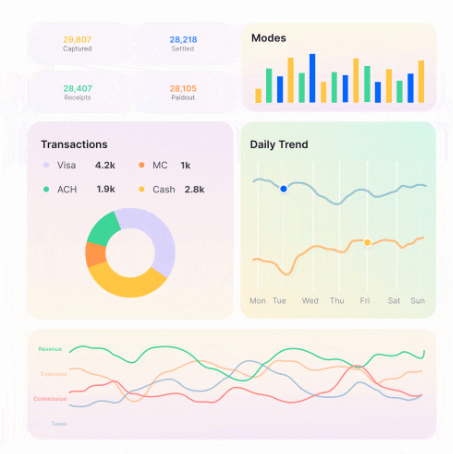Bank reconciliation is a crucial financial process that ensures a company’s records match the transactions listed on its bank statements. Traditionally, this task was performed manually, involving time-consuming and error-prone procedures. However, bank reconciliation automation is transforming this process, offering significant improvements in efficiency, accuracy, and financial management. Here’s an in-depth look at bank reconciliation automation, its benefits, and considerations for implementation.
1. What is Bank Reconciliation Automation?
Bank Reconciliation Automation involves using software solutions to automate the process of matching and reconciling a company's internal financial records with bank statements. This technology reduces the need for manual data entry and comparison, leveraging algorithms and predefined rules to streamline and expedite the reconciliation process.
2. Benefits of Bank Reconciliation Automation
Increased Efficiency: Automation speeds up the reconciliation process by eliminating manual tasks. With automated matching and reconciliation, companies can complete the process faster, freeing up valuable time for finance teams to focus on more strategic activities.
Enhanced Accuracy: Automated systems minimize human error by providing accurate matching and reconciliation of transactions. This reduces the risk of discrepancies and ensures that financial records are precise and reliable.
Cost Savings: By reducing manual effort and streamlining processes, automation lowers operational costs associated with bank reconciliation. It also helps prevent costly errors and potential fraud.
Real-Time Visibility: Many automated reconciliation tools offer real-time reporting and dashboards, providing immediate insights into reconciliation status and outstanding issues. This enables quicker decision-making and more effective financial management.
Regulatory Compliance: Automation supports compliance with financial regulations and internal controls by maintaining accurate records and providing an audit trail. This simplifies compliance and audit processes, reducing the risk of regulatory issues.
3. Key Features to Look for in Bank Reconciliation Automation Tools
Seamless Integration: Choose software that integrates with your existing accounting systems and banking platforms. This ensures smooth data flow and minimizes manual data entry.
Advanced Matching Capabilities: Look for tools with robust matching algorithms that can handle complex transactions and large volumes of data. Effective matching capabilities are crucial for accurate reconciliation.
Exception Management: The software should include features for managing discrepancies and exceptions. Automated alerts, exception reporting, and workflow tools can help address and resolve issues efficiently.
User-Friendly Interface: A user-friendly interface is essential for ease of use. The software should be intuitive, with clear navigation and accessible features that streamline the reconciliation process.
Security and Compliance: Ensure the software adheres to industry standards and regulatory requirements. It should offer strong security features to protect sensitive financial data and ensure compliance with relevant laws.
4. How Bank Reconciliation Automation Works
Data Import: The system imports transaction data from various sources, including bank statements and internal financial records. This can be done through direct bank feeds, file uploads, or API integrations.
Transaction Matching: The software uses predefined rules and algorithms to compare and match transactions from different sources. It identifies corresponding entries and highlights discrepancies.
Exception Handling: The system flags unmatched or inconsistent transactions for review. Users can investigate and resolve these exceptions, such as by adjusting records or contacting the bank.
Reporting and Analysis: Automated tools generate reports and dashboards that provide insights into the reconciliation process. These reports help track progress, identify trends, and make informed financial decisions.
5. Implementing Bank Reconciliation Automation
Assess Your Needs: Evaluate your organization’s specific requirements, such as transaction volume, integration needs, and reporting preferences. This will help you select a solution that aligns with your needs.
Research and Compare: Investigate different automation tools and compare features, pricing, and user reviews. Consider conducting trials or seeking recommendations to find the best fit for your organization.
Plan for Integration: Ensure that the chosen solution integrates seamlessly with your existing systems and processes. Proper integration is crucial for maximizing the benefits of automation.
6. Conclusion
Bank reconciliation automation is a game-changer for financial management, offering enhanced efficiency, accuracy, and cost savings. By automating the reconciliation process, organizations can reduce manual effort, prevent errors, and gain real-time insights into their financial status. When selecting an automation tool, consider key features such as integration capabilities, advanced matching algorithms, and user-friendliness to ensure it meets your organization’s needs. With the right solution, bank reconciliation can become a streamlined and effective component of your financial operations.
For more info. visit us:
Navigating the Future: Emerging Technologies Reshaping Global Finance





Comments